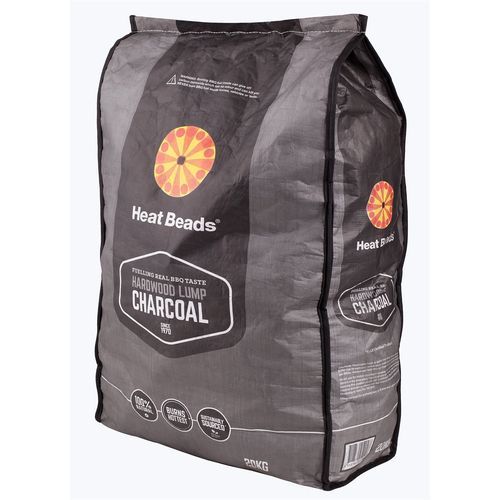Yes, but it depends on what sort of wood was used to make the charcoal. How much ash, water, air, and volatile chemicals are in the wood. Not much heat in Balsa charcoal because Balsa is so light. Other woods have a high volatile and ash content, so a lot of heat is lost when the wood is cooked evaporating oils and acetone etc, leaving a Carbon diluted by ash.
The wood used to make Charcoal for Gunpowder comes from a few high carbon low ash species. The wood used to make BBQ charcoal is highly variable, but as a rule of thumb hardwood charcoal contains more energy per lump than softwood charcoal.
You will need to sample several brands to find experimentally which works best in your loco. And don't assume that a particular brand will always be consistent – there's no guarantee the maker will carbonise exactly the same species of wood every time: more likely he carbonises a mix decided by the availability and cost of wood. Choosing woods that flavour food are more important to him than heat value: the needs of locomotive drivers aren't considered at all. But the right sort of charcoal competes well with good coal.
Most coals are unsuitable for model locos too. Coal is a natural product created over millions of years. It's qualities depend on the type of vegetation, high or low ash content etc, that grew in a primeval forest then on the circumstances in which it was submerged, how much pressure was applied to it by succeeding geological layers, and for how long. Brown coal is very poor, whilst hard coals have a high heat value. Welsh Steam Coal was the best in the world for locomotives. It was a hard coal, created from a low ash vegetation, highly compressed, for a very long time – as good as it gets. Other coals, notably from the Eastern US, are nearly as good, but most are more contaminated. or have lower heat value than the very best. Coal suitable for making coke is a good bet if you can find any, but most of it goes for steel-making. Power stations burn inferior coal, where high ash content and impurities like Sulphur and Phosphorous can be managed. Older Brits will remember 'Nutty Slack', a dusty highly contaminated coal product left after removing the best lumps. It burnt reluctantly in domestic grates and the pollution caused smog – anyone with a lung or heart problem died young! Now we have Smokeless Fuel, coal treated to remove dirt, not quite coke. I don't know if it's any good for model locos.
Not sure what the problem obtaining coal in Australia is : Australians consume more coal per head than any other country in the world! Most likely reason is it's all exported, mostly to China, and there isn't a domestic market.
Dave
duncan webster 1.





